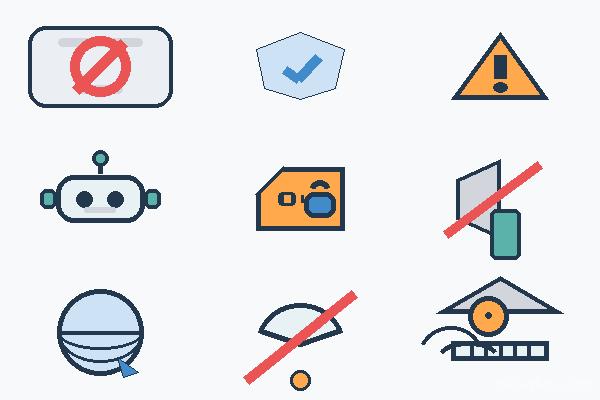How to Block Unknown Numbers and Protect Yourself from Unwanted Calls (2025 Guide)
Updated: August 2025
- Overview
- Why Unknown Calls Happen
- Quick Actions
- Block on iPhone (iOS)
- Block on Android
- Use Carrier Spam Tools
- Stop Spam Texts
- Verify Legitimate Calls Safely
- How to Report Abuse
- Advanced Protection
- FAQ
- Quick Checklist
Overview
Unknown and unwanted calls waste time—and sometimes lead to fraud. The best defense is a mix of device settings, carrier filtering, and smart verification habits. This SEO-friendly guide shows exactly how to block unknown numbers on iPhone and Android, cut off spam texts, report bad actors, and keep you and your family safer every day.
Why Unknown Calls Happen
- Robocall campaigns: Automated dialers test ranges of numbers and drop voicemails to trigger callbacks.
- Caller-ID spoofing: Fraudsters display “local” numbers or imitate trusted brands to increase pickup rates.
- Data leaks & public listings: Old directories, exposed profiles, and recycled numbers fuel targeting lists.
- Over-aggressive telemarketing: Some businesses ignore consent and call lists they shouldn’t.
Because spoofed IDs change constantly, you’ll get the best results by silencing unknowns by default and only answering verified contacts.
Quick Actions When an Unknown Number Rings
- Don’t answer. Let it go to voicemail. Legitimate callers leave context.
- Review the message. Watch for urgency, secrecy, or code requests—classic red flags.
- Block and label. Use your phone’s “Block/Report spam” options to train filters.
- Verify independently. If the message claims to be your bank or a courier, call the official number on your card or website—never the voicemail callback.
How to Block Unknown Numbers on iPhone (iOS)
- Block individual callers: Phone > Recents > tap the i next to the number > Block this Caller.
- Silence all unknown callers: Settings > Phone > Silence Unknown Callers (sends non-contacts to voicemail).
- Filter unknown texts: Settings > Messages > Filter Unknown Senders.
- Use a reputable filtering app: Install a well-reviewed caller-ID/spam app to label high-risk calls.
Tip: Keep iOS and any filtering app updated so block lists and machine-learning models stay effective.
How to Block Unknown Numbers on Android
- Block individual callers: Phone app > Recents > long-press the number > Block/Report spam.
- Turn on caller-ID & spam protection: Phone app > Settings > enable Caller ID & spam.
- Silence unknowns during focus times: Use Do Not Disturb to allow calls only from contacts or favorites.
- Add a trusted spam-blocking app: Choose one with strong privacy and frequent updates.
Use Your Carrier’s Spam-Blocking Tools
Most carriers offer free or low-cost features like Spam/Scam ID, call labeling, and auto-blocking of high-risk categories. Open your carrier’s app or account dashboard to:
- Enable call labeling (e.g., “Scam Likely,” “Telemarketer”).
- Auto-block high-risk calls or send them straight to voicemail.
- Report spam inside the carrier app to improve network reputation scores.
Stop Spam Texts and Smishing
- Turn on SMS spam protection in your default messaging app.
- Block the sender and delete the thread—never tap unfamiliar links.
- Forward spam texts to 7726 (SPAM) where supported by your carrier to help block routes.
- Use app-based 2FA (authenticator apps) instead of SMS codes when possible.
Verify Legitimate Calls Safely
Scammers mimic real institutions. Protect yourself with these simple rules:
- Use a trusted source: Call the number printed on your card, statement, delivery slip, or the company’s official website.
- Never share one-time codes: Banks and services won’t ask for 2FA codes, recovery keys, or full passwords over the phone.
- Insist on written proof: Ask for a secure message or email from a domain you can verify.
- Slow the pace: Urgency (“act in 10 minutes”) is a hallmark of fraud. Hang up and verify.
How to Report Unwanted or Fraudulent Calls
Reporting teaches filters and helps investigators connect cases. Include the caller ID shown, date/time, a short script summary, and screenshots/voicemails (redact personal data).
- FTC ReportFraud: For consumer scams and imposters.
- FCC Consumer Complaints: For illegal robocalls, spoofing, and spam texts.
- FBI IC3: If money was lost or remote access was involved.
- 7726 (SPAM): Forward spam texts to your carrier where supported.
- Agency imposters: IRS/TIGTA, SSA OIG, HHS OIG depending on the script.
Advanced Protection Tips
- Silence by default: Let only contacts or favorites ring; others go to voicemail.
- Harden voicemail: Keep your greeting generic; avoid stating your full name or number.
- Limit exposure: Remove your phone number from public profiles and old directories.
- Rotate compromised numbers: If a number is heavily leaked, consider a new line and restrict the old one to essential verifications during transition.
- Teach your family: Share these steps with seniors and teens—common targets for voice and text scams.
FAQ
Does blocking a number stop all future calls?
Not completely—fraudsters rotate IDs. Blocking still prevents repeats from that caller ID and feeds data to filters.
Is it safe to answer and ask to be removed?
No. Answering confirms your line is active and can increase spam volume. Let unknown numbers go to voicemail, then block and report.
What if the call looks local?
That’s likely neighbor spoofing. Treat the content of the message as the signal, not the digits on the screen.
Are call-blocking apps trustworthy?
Choose reputable apps with clear privacy policies and minimal permissions. Check recent reviews and update cadence.
Quick Checklist
- Enable Silence Unknown Callers (iOS) or Caller ID & spam protection (Android).
- Block/report suspicious numbers after every attempt.
- Turn on carrier Spam/Scam ID and auto-block high-risk calls.
- Filter SMS, forward spam texts to 7726 where supported, and never tap unknown links.
- Verify claims by calling the official number from a trusted source.
